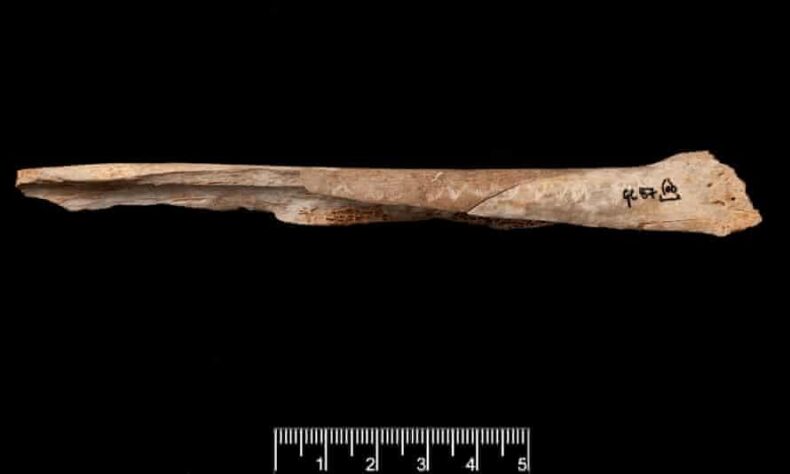During a recent Analysis of Ancient Human DNA in Britain, the surprising result showed 2 contrasting ancestries.

(Source: TechnologyNetworks)
Britain: During a recent analysis of Human DNA, 2 genetically different groups were found at the end of the last Ice Age. Around 27,000 years ago, the last ice age made the region less habitable making it hard for humans in Britain to hunt and survive by normal means.
Ancient Human DNA: Revealing Archaic People

About 19,000 years ago, Ice sheets that Covered much of Britain started melting and the land started to become more habitable for humans. There are various shreds of evidence of their returns from that era. The evidence also shows that the humans crossed the land that connected Britain from Europe’s mainland.
Various stories are being cooked on those early migrants, finding the region. Oldest Genomes from remains uncovered two different origin stories and many theories, each leading back to Europe mainland and beyond.
Human remains from the late ice age have been found in only a few places such as –
- Gough’s Cave in Somerset is famous for being home to the “Cheddar Man” an individual from 10,000 years ago.
- Kendricks Cave in Llandudno, Wales.
Older remains were also found which showed signs of cannibalism. The Extracted Human DNA when analyzed showed two contrasts in the DNA. Natural History Museum tweeted, “Scientists have sequenced the oldest human DNA in all of Britain to date! From cannibalized human remains, The DNA shows 2 entirely contrasting populations of people living in the UK around 14,000 years ago.”
The ancestry linked, as the female human cannibalized lived around 14,900 years ago and she shared ancestry with an individual who was discovered previously in Belgium named Goyet Q2, who was said to live 15000 years ago.
On the other hand, another much younger male Human DNA from 13,500 years ago was found in Kendrick’s Cave and showed ancestral links with 14,000 years old remains back to Villabruna, Italy.
This shows that two groups that expanded from South-West Europe, have been associated with types of stone tools and treatment of the dead, cave arts, and various practices have been discovered.
Understanding Ancient Human Migrations

The Migration of Populations from which the male and female derived occurred at the End of the Ice Age as when glaciers melted and formed oceans and seas the groups started to migrate from Britain to Northern Europe. And thus, adapting and changing their culture and diets.
During the study, it was also revealed that humans around 45,000 years ago, had dark skin and due to migrating and climate changes it evolved shortly after. During DNA Analysis, it was also revealed that humans that lived in Britain around 10,000 years ago, were black skinned humans which suggests that reduced skin pigmentation arrived much later.
The Study and Research Analysis of DNA

Researchers from the University College London (UCL) Institute of Archaeology, with the Natural History Museum and Francis Crick Institute, have discovered Ancient Human DNA. The Paleolithic Age (The Age of the earliest use of known stone tools/ or the earliest of the stone age) is said to be around 3.3 million years ago to recent 11,650 years ago.
Dr. Sophy Charlton, the first author of the study from the University of York said, “We can see that there are two different genetic ancestries present in Britain during this late glacial period, which perhaps not what was expected.”
In Journal Nature Ecology and Evolution, Charlton and her colleagues reported that an isotope analysis of the remains, which helped them understand the conditions they are in and what their diet was and refining the radiocarbon dating (A method to determine the age of a person or object containing organic material by using properties of radiocarbon, radioactive isotope of carbon.)
By considering previous work, it is also revealed that at Gough’s Cave humans usually relied on terrestrial animals, such as horses, red deer, and cows, whereas the humans in Kendrick’s Cave relied more on aquatic creatures.
Dr. Selina Brace, a co-author of Study from the Natural History Museum had a different point of view as she stated, “These results are quite unexpected as human remains had ancestries from southern Europe and Italy, considering Cheddar man had dual ancestry.”
The team suggested that at least two human groups with distinct cultures and diets were present in Britain at The End of the Ice Age. Spencer Well, an American geneticist and a author in a tweet, said, “These sweeping cultural changes are not the signs of Great Britain’s first postglacial people adapting— they were signs of entirely new people altogether.”
Prof. Paul Pettitt of Durham University was not involved in the research, but said, “The Gough’s and Kendrick’s Cave groups were not contemporaries, DNA analysis to solve the mystery that whether the culture in prehistory was caused due to populations migrations or by the spread of ideas.”
The research suggests the spread of ideas was the case. He also later added, “In Keeping with prehistorians have small but stable hunter-gatherers, this (research) adds evidence to the growth of small and environment fragile groups spreading to late Pleistocene Europe.”
(With inputs from Multiple Media Outlets)
Read More at: – James-Webb-space-telescope













